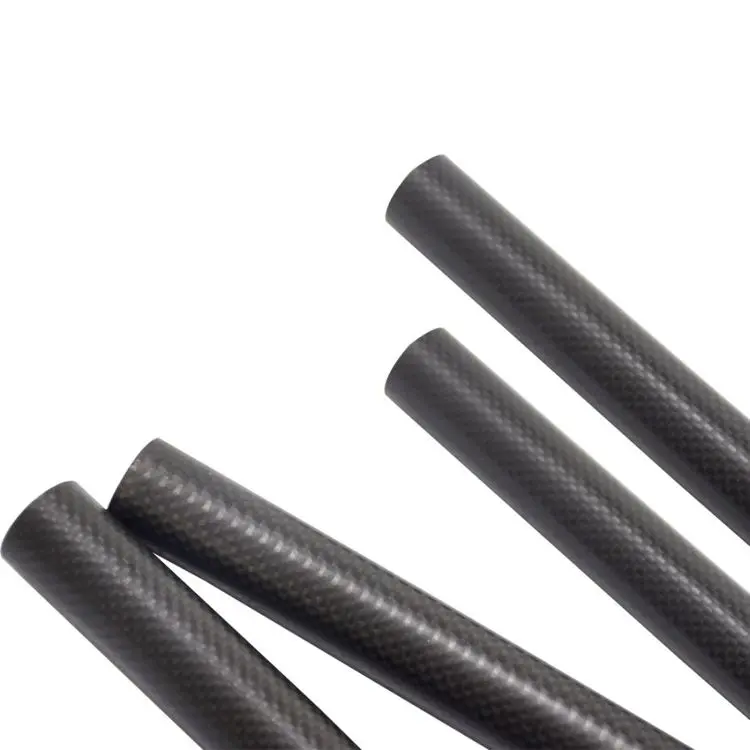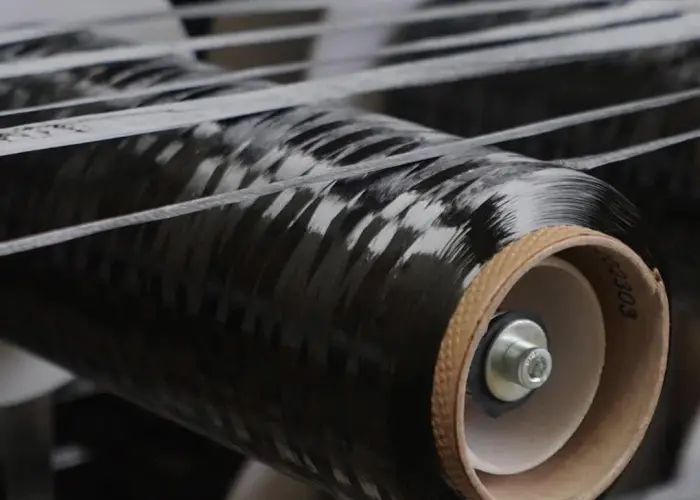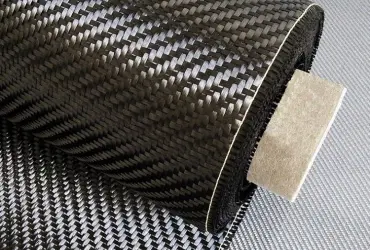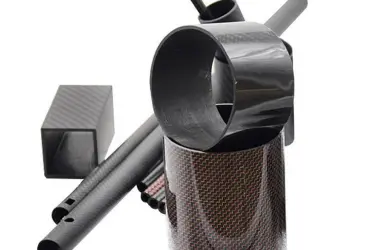Lightweight × High Precision × Rapid Deployment Selection Guide
Author: Aohong Aerospace-Grade Carbon Fiber Application Center
1. Why 3K Carbon Fiber Tubes Are the “Skeleton” of Choice for Drones & Robots
- 30 %–50 % lighter than aluminum, over 70 % lighter than steel
- 4–5× the specific stiffness of aluminum alloy, reducing end‑point vibration
- 3K twill weave provides a 3D texture for both premium appearance and anti‑slip grip
- Corrosion‑resistant, low creep—service life doubled in outdoor/high‑humidity environments
2. Typical Load‑Bearing Areas for 3K Carbon Fiber Tubes in Drones & Robots
| Component | Load Type | Recommended Specs | Key Performance |
|---|---|---|---|
| Drone Arm | Bending + Torsion | Ø15–25 mm, t = 1.0–2.0 mm | High torsional stiffness; resonance > 100 Hz |
| Robot Linkage | Tension/Compression + Bending | Ø8–20 mm, t = 1.5–3.0 mm | Straightness ≤ 0.1 mm/m |
| End Effector | Cantilever Bending | Ø6–12 mm, t = 0.8–1.5 mm | Weight < 20 g |
| Landing Gear / Support Leg | Impact + Fatigue | Ø20–30 mm, t = 2.0–3.5 mm | Energy absorption; impact resistance |
3. 4‑Step Selection Process for 3K Carbon Fiber Tubes (Complete in 30 Seconds)
- Load Calculation
- Bending Moment: M = F × L
- Torsion: T = Fₜ × r
- Use our online “Load Calculator” to get the minimum wall thickness tₘᵢₙ.
- Diameter–Wall‑Thickness Pairing
- Long Cantilevers (L > 400 mm): Ø ≥ 20 mm & t ≥ 1.5 mm for higher critical speed
- Short Links (L < 200 mm): Ø 10–15 mm & t = 1.0 mm for optimal weight savings
- Fiber/Resin System
- Standard: T300 3K + epoxy, cured at 120 °C for best cost‑performance
- Aerospace: T700 3K + toughened epoxy, +30 % strength, enhanced impact resistance
- Low‑Temp: epoxy cured at 80 °C, ideal for heat‑sensitive electronics
- Surface Finish & Fittings
- Cosmetic Parts: 3K twill glossy finish + laser‑etched logo
- Functional Parts: 3K twill matte finish (anti‑glare, anti‑fingerprint)
- In‑mold Aluminum Ferrules: hole tolerance ± 0.02 mm, direct motor/servo mounting—no post‑machining

4. Real‑World Comparison: 3K Carbon Fiber Tubes vs. 6061‑T6 Aluminum Rods
| Parameter | Ø20×1.5 mm 3K Tube | Ø20×2.0 mm Aluminum Tube | Improvement |
|---|---|---|---|
| Mass (per 1 m) | 110 g | 220 g | – 50 % |
| Tensile Stiffness | 38 kN/mm | 20 kN/mm | + 90 % |
| Critical Speed* | 4 200 rpm | 2 800 rpm | + 50 % |
| Salt Spray (500 h) | No corrosion | Surface oxidation | — |
*Cantilever length 500 mm, tip mass 0.5 kg
5. Quick‑Reference Selection Table
| Application | Recommended Spec | Ply Schedule | Tolerance Grade | Notes |
|---|---|---|---|---|
| Consumer Aerial Quadcopters | Ø15×1.2 mm | [±45°/0°/±45°] | P1 | – 35 % weight |
| Agricultural Hexacopters | Ø25×2.0 mm | [0°₂/±45°/90°] | P0 | Chemical‑resistant |
| Collaborative Robot Links | Ø12×1.5 mm | [0°₃/90°] | P0 | Straightness ≤ 0.05 mm/m |
| Humanoid Robotic Arms | Ø8×1.0 mm | [0°/±45°] | P1 | Flexible joints |
6. Delivery & Customization
- Stock Ranges: Ø 4–30 mm, t 0.5–5 mm, lengths 100–3000 mm; 48 h dispatch
- Custom Sections: Octagonal, rectangular, Ω‑shaped, etc.
- One‑Click Downloads: STEP models + dynamic balancing report for direct installation
7. In One Sentence
Choosing the right 3K Carbon Fiber Tubes equips your drones and robots with a “skeleton that’s as light as a feather and as strong as steel.”





